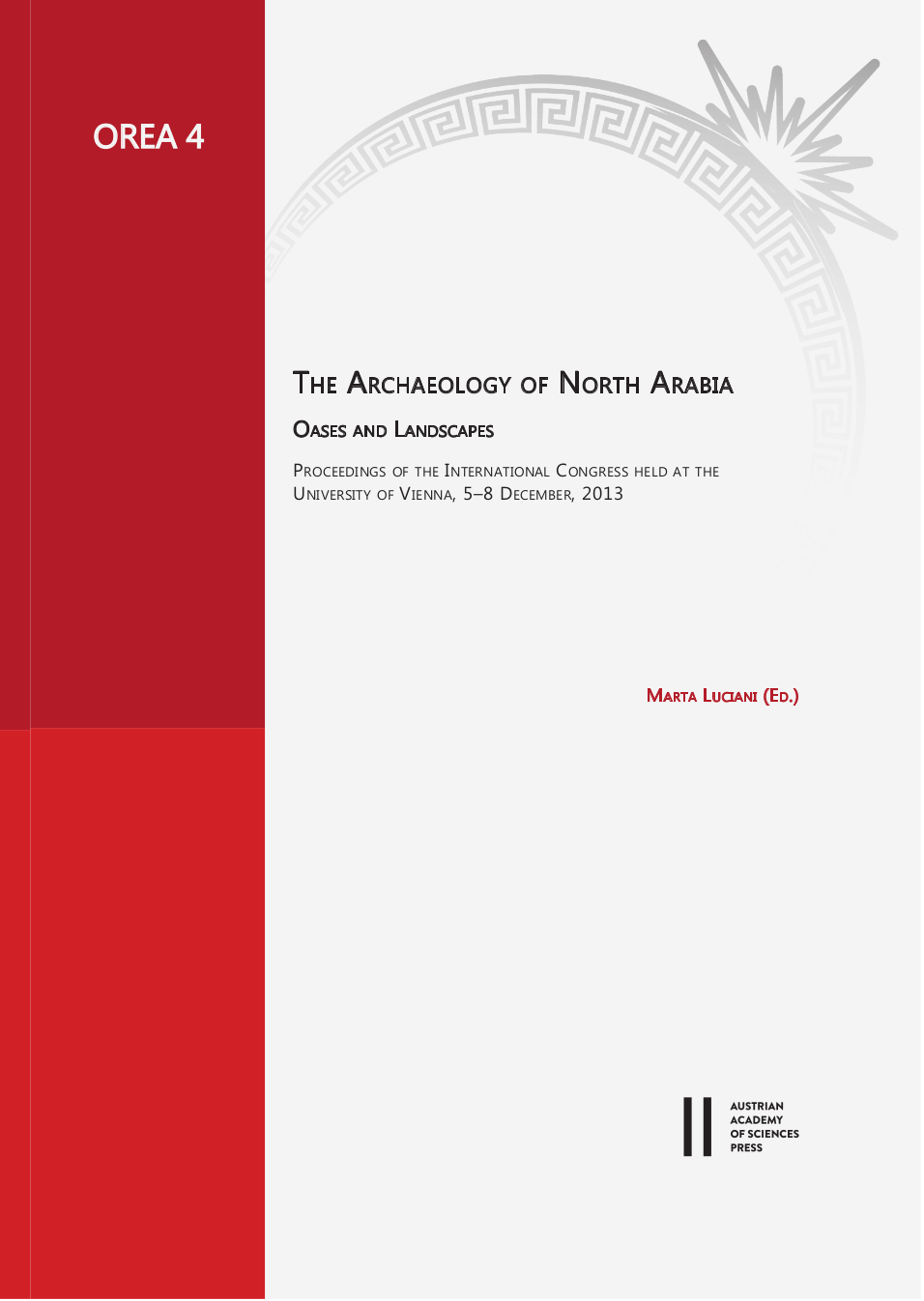
The Archaeology of North Arabia, Oases and Landscapes, pp. 79-114, 2016/11/30
Proceedings of the International Congress held at the
University of Vienna, 5-8 December, 2013
Recent archaeological research in the sepulchral landscapes of the 6th and 5th millennia BCE in northwest Arabia encountered mobile, well/trough/dam-based pastoral cultures that were sustained by the moisture episodes of Arabia’s Mid Holocene. These unknown, partly megalithic cultures appear to be characteristic for the land use in today’s arid belt stretching from northwest Africa to Yemen: their sites must have been meeting places for ancestor commemoration, watering flocks and social transaction in the former steppe environments dotted with lakes, water holes and high aquifers, even allowing for a semi-permanent occupation of hydrologically favoured locations. The sepulchral well cultures of Qulban Beni Murra, Rajajil and Rasif (5th millennium BCE) are discussed here in terms of their hydraulic competence and social structures, and in terms of their potential of being the progenitor cultures of Arabia’s earliest oasis socio-economies. These 5th millennium BCE cultures are assumed to have ended in an environmentally forced shift/adaptation to the sustainable sedentarisation of the Arabian Peninsula, gradually taking place from the end of the 5th millennium BCE when the climate became drier. Based on the northwest Arabian evidence, this contribution presents a set of research hypotheses – or a model – on how such a general socio-hydraulic transition from mobile herding to sedentary horticulture during the 5th and 4th millennia BCE may have taken place on the Arabian Peninsula.
Keywords: Arabia’s Mid Holocene pastoral well cultures, Arabia’s Mid Holocene environment, early oases’ economies, forced socio-hydraulic subsistence shifts